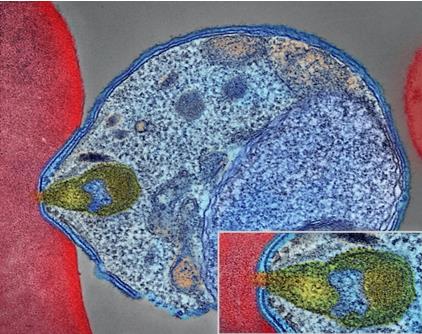What is Malaria?
Based on the data of WHO, 229 million new infections of malaria occurred in 2019, including 409,000 fatalities. Humans and other animals can contract the mosquitoes-spread infectious disease malaria, which is primarily caused by Plasmodium-group single-cell microorganisms. Only mosquito bites from infected Anopheles species can spread it. The parasites that existed in the mosquito's saliva enter a person's bloodstream through a mosquito bite. The parasites' destination is the liver, where they develop and procreate.
Malaria's symptoms are all caused by red blood cell infection. Typically, it takes ten to fifteen days for symptoms to appear since one is bitten by an infected mosquito. The symptoms of Malaria are common, such as fever, fatigue, and headaches. In the worst-case scenario, it can cause death, convulsions, coma, and jaundice. A diagnosis is frequently established based on the symptoms and travel history before being verified with a lab experiment to figure out whether the parasite is present in the blood because of the non-obvious signs of malaria.
 Fig.1 Malaria parasite (blue) attaches to the red blood cell. (Wikipedia)
Fig.1 Malaria parasite (blue) attaches to the red blood cell. (Wikipedia)
What Causes Malaria?
The most lethal kind of malaria in humans results from the unicellular protozoan parasite Plasmodium falciparum (P. falciparum). About 50% of all instances of malaria are brought on by it. Therefore, P. falciparum is regarded as the most lethal parasite in humans, whose 14 chromosomes make up the roughly 24 Mb genome and are very AT-rich (around 80%).
P. falciparum's microstructure is dynamic and alters often during the course of its life cycle. The spindle-shaped sporozoite is 10-15 μm long. In the liver, it develops into an oval schizont with a width of 30-70 μm. Merozoites are produced by each schizont, and they measure around 1.5 μm in length and 1 μm in width. The merozoite transforms into a trophozoite inside the erythrocyte by forming a ring-like structure. After consuming the hemoglobin, trophozoites produce the granular pigment known as hemozoin. The elongated and crescent-shaped gametocytes of P. falciparum can distinguish them from other types of Plasmodium. A mature gametocyte measures 8–12 μm in length and 3-6 μm in width. A rounded oocyst can reach a maximum size of 80 μm in diameter.
Antibody About Malaria
The major objectives to prevent malaria by generating humoral and cellular immunity against the pre-erythrocytic circumsporozoite protein (CSP) and the liver stage antigen-1 are to avoid parasitemia and restrict the development of malaria. The first P. falciparum gene to be discovered and cloned, CSP, has non-repeat sections flanking a center portion of species-specific amino acid repeat sequences. Both sequences can cause T cells or B cells to mount an immunological response, which may produce related antibodies. High titer antibodies that have been generated can prevent liver infection and inhibit the parasite's spread.
Creative Biolabs has a professional team of trained scientists, cutting-edge equipment, and well-known products. For all your questions about antibody production, please feel free to contact us for more details.
Other Antibody Products
- Heppnerjr, D.; et al. Towards an RTS,S-based, multi-stage, multi-antigen vaccine against falciparum malaria: progress at the Walter Reed Army Institute of Research. Vaccine. 2005, 23: 2243–2250.